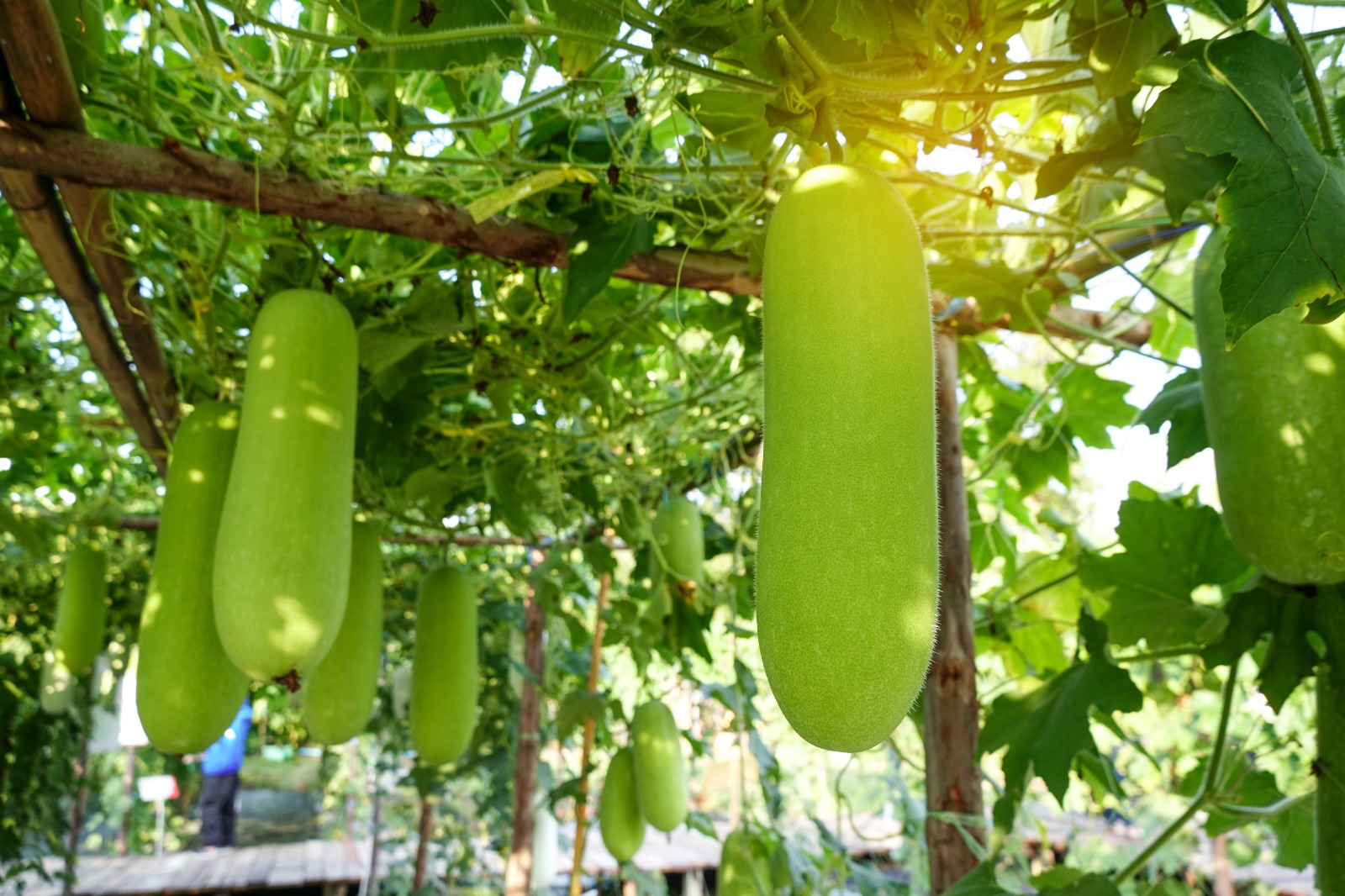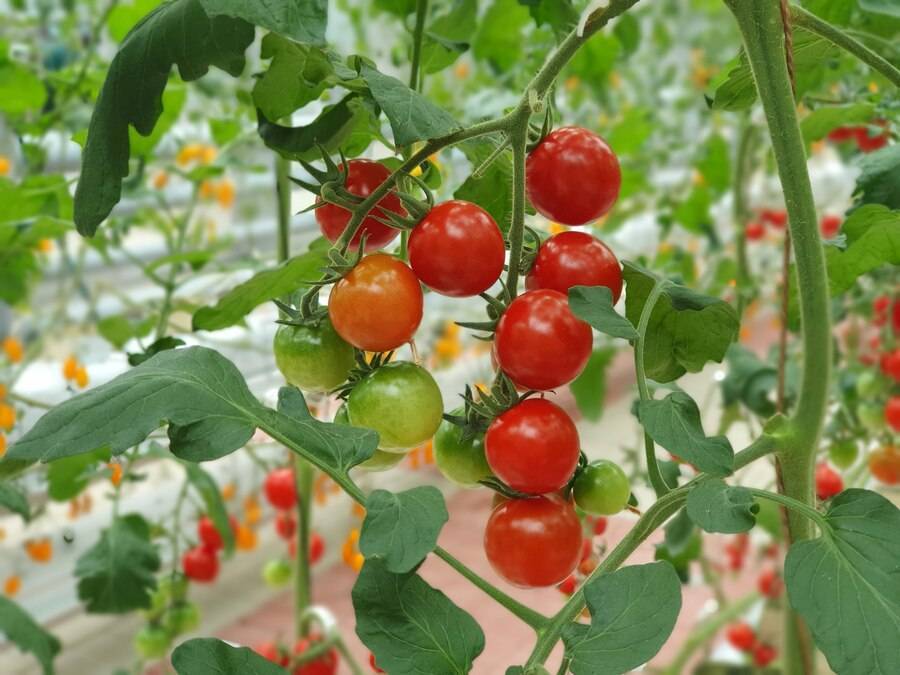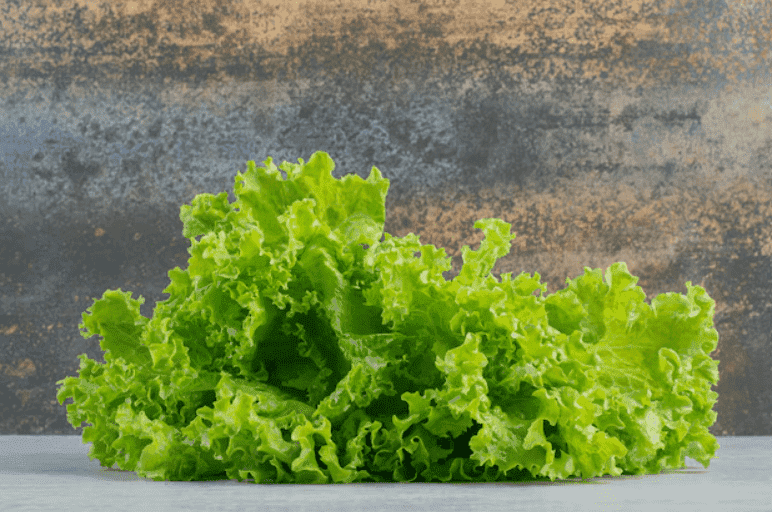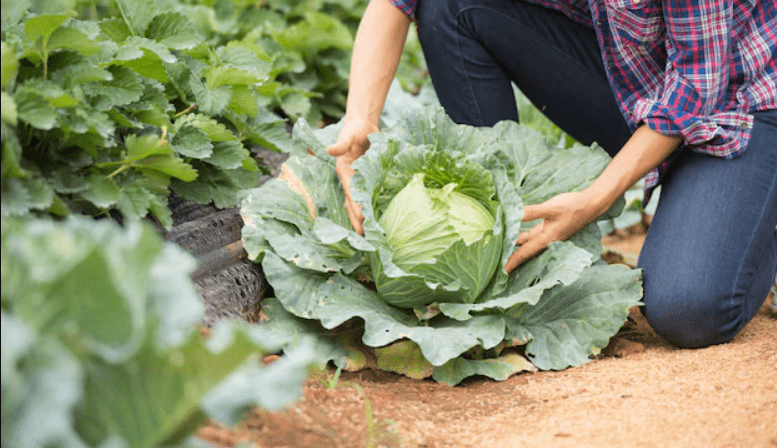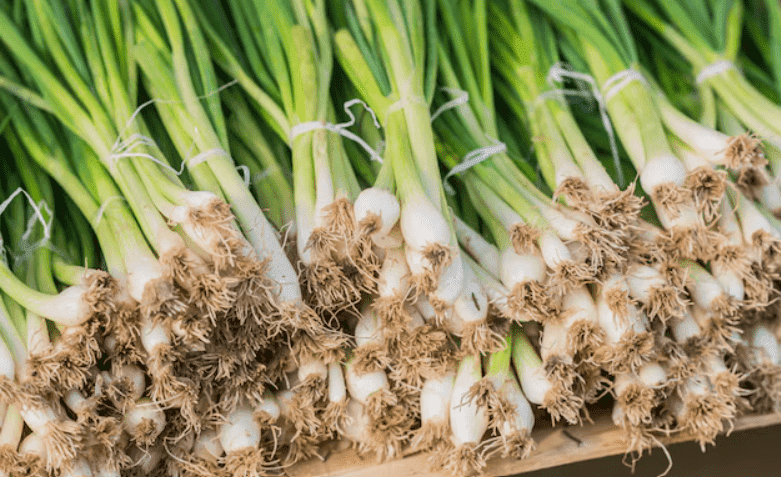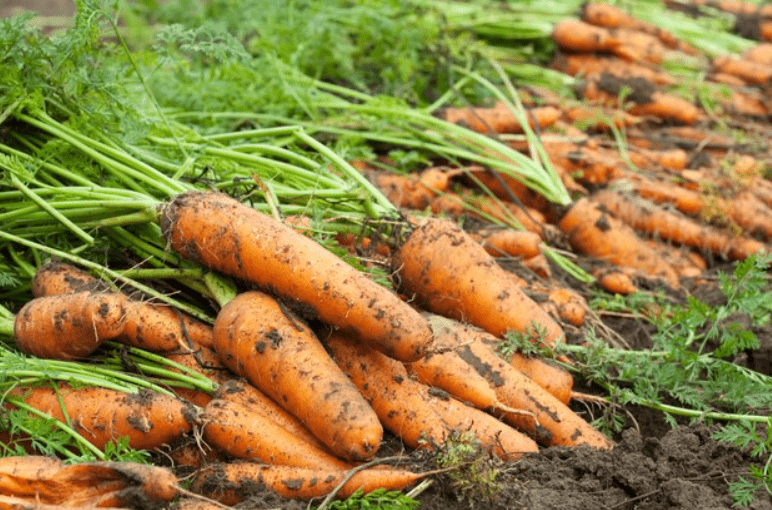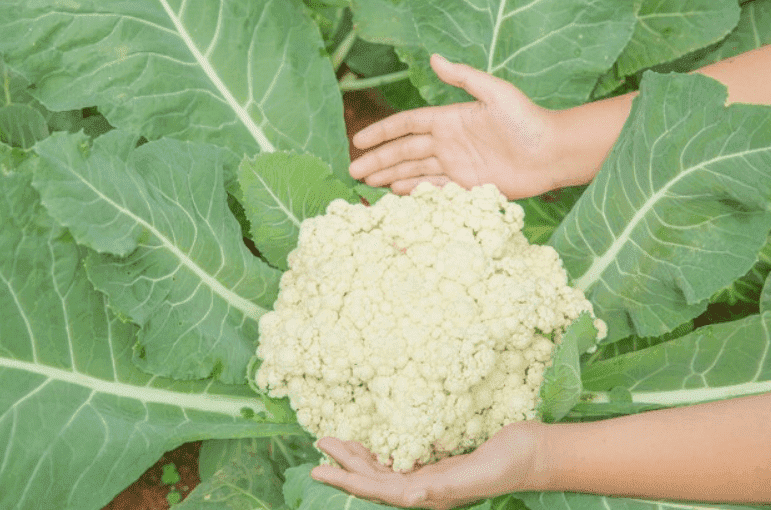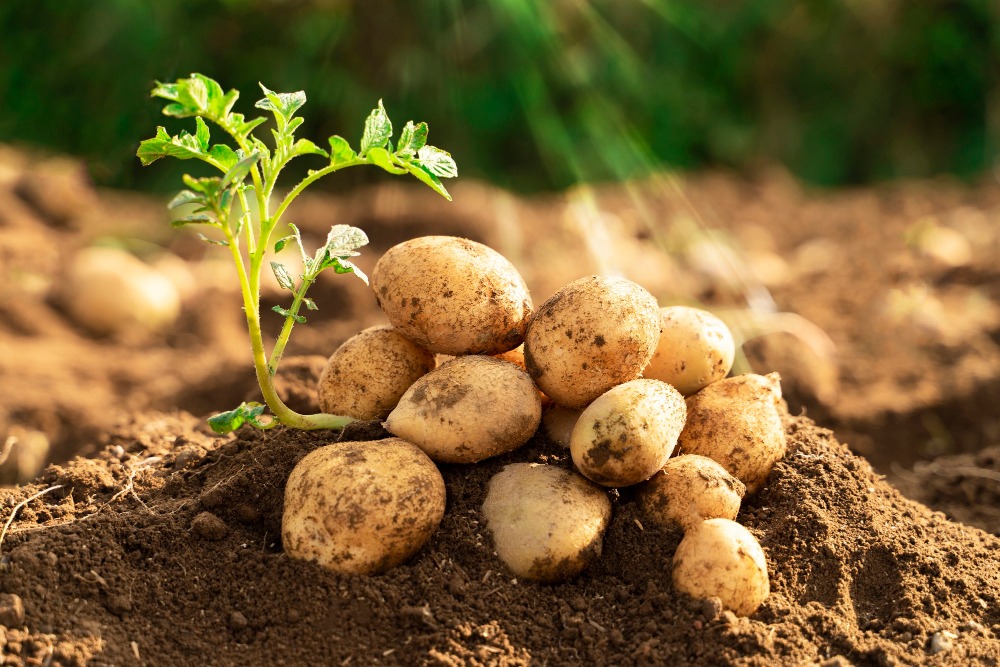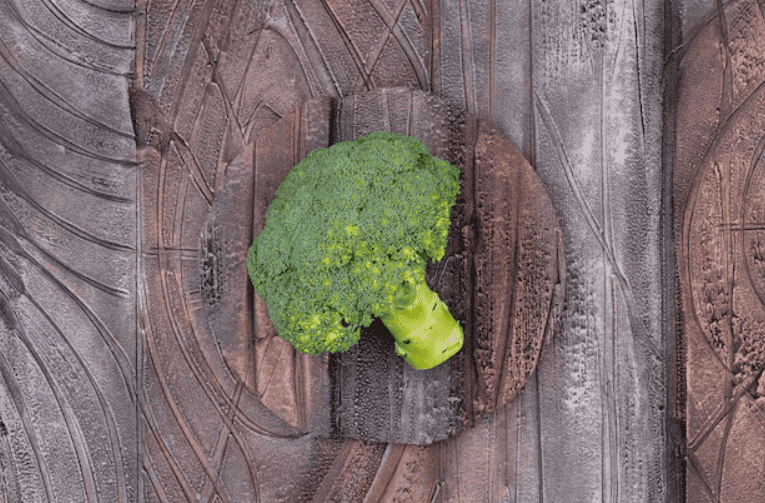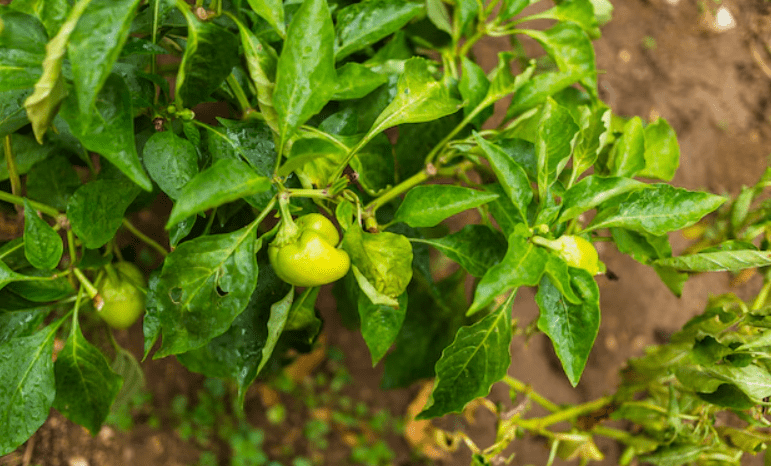Bottle gourd (Lagenaria siceraria), a member of the cucumber family (Cucurbitaceae), is a popular fruiting vegetable grown across China, India, and beyond. Also known as calabash, it’s commonly referred to as lauki or doodhi.
This fast-growing climber features coiled tendrils that enable it to scale trellises and supports with ease. Its light green fruits, filled with soft white flesh, come in a variety of shapes and sizes. Though the long, cylindrical, and short, rounded types are the most common ones.
Table of Contents
ToggleHow to Plant Bottle Gourd
When to Plant
Bottle gourds thrive in warm weather and require ample sunlight and a long growing season. Since it’s sensitive to frost, wait until the soil has fully warmed up before planting. In most regions, you can sow seeds once the risk of frost has passed, and again in June for a possible second harvest.
Choosing the Right Planting Spot
Grow bottle gourd just like you would melons, cucumbers, or pumpkins. Since garden centers rarely carry seedlings, you’ll most likely start from seeds. Select a site that gets a minimum of 6 to 8 hours of sunlight each day. The vines grow quickly and spread widely, so give them ample space to sprawl or climb.
Spacing, Depth, and Support
Sow seeds about an inch deep, spacing them roughly two feet apart. Bottle gourd vines are vigorous growers that continue to extend through summer, so proper spacing is crucial. If you prefer to keep the fruit off the ground, use a strong trellis. Trellising helps produce straighter, cleaner gourds. The plant won’t survive frost, so once the vine dies back, harvest the mature gourds right away.
Bottle Gourd Plant Care
Learning how to grow bottle gourd starts with understanding its basic care needs. With the right conditions, this fast-growing vine will reward you with a generous harvest.
Light
The bottle gourd requires full sun to thrive. Aim for a minimum of 6 to 8 hours of direct sunlight daily for healthy growth and fruit production.
Soil
Use fertile, well-draining loamy soil with a neutral pH. Adding organic mulch at the base of the plant helps retain moisture and keeps the fruits clean, especially if you’re not using a trellis.
Water
As a vigorous summer grower, bottle gourd demands consistent watering. It requires at least an inch of moisture per week during peak growing periods, especially in hot weather. Ensure the soil remains evenly moist, but take care not to saturate it.
Temperature and Humidity
When learning how to grow bottle gourd, timing is key. This tender annual cannot tolerate frost, so avoid planting until the soil warms up to at least 70°F (21°C). Bottle gourd vines handle high humidity well, but they struggle in dry conditions unless they receive regular watering.
Fertilizer
Use a balanced fertilizer when planting, and apply a side dressing once the vines begin to spread. Be careful not to over-fertilize, as too much nitrogen will encourage excessive vine growth at the expense of flowers and fruit.
Pollination
Like other gourds, bottle gourd is monoecious. This means the plant grows both male and female flowers on a single vine. The male blooms, often appearing first and opening at night, are followed by female flowers with a small gourd-shaped base. These female flowers open for only one day, allowing hand-pollination to improve yield. Use a soft brush or toothbrush to transfer pollen from male to female blooms for better fruit set.
Pruning
Avoid pruning bottle gourd vines, as cutting them back significantly reduces fruit production. Let the vines grow freely to ensure maximum harvest.
How to Grow Bottle Gourd in Pots
If you’re wondering how to grow bottle gourd in pots, the process is very similar to growing it in the ground. Use the same type of soil—loamy, fertile, and well-draining and make sure your plant gets plenty of sunlight and consistent moisture.
Keep in mind that container-grown bottle gourds tend to dry out faster, so you’ll need to water them more often, especially during hot weather. Select a large, sturdy pot with drainage holes and position it next to a sturdy trellis or vertical support. Bottle gourd vines grow rapidly and need room to climb for healthy development and straight fruit.
How to Grow Bottle Gourd from Seed
If you’re exploring how to grow bottle gourd from seed, you’ll get the best results by sowing seeds directly into the garden soil after the last frost. However, if outdoor planting isn’t an option right away, you can start seeds indoors and transplant them later.
Direct Sowing
- Wait until all danger of frost has gone and the soil has warmed up.
- Sow seeds about 1 inch deep into prepared garden soil.
- Water the soil thoroughly after planting and keep it evenly moist until the seeds germinate.
Starting Indoors
- Plant seeds 1 inch deep in seed-starting mix or potting soil.
- Keep the soil consistently damp until the seedlings emerge.
- Once plants have developed 4–5 true leaves:
- Begin reducing watering slightly.
- Move the seedlings outdoors for a few hours daily in a sheltered area with light wind and some sun. This hardens them off gradually.
- Increase sun exposure gradually while keeping the plants well-watered.
- Move seedlings to the garden after the risk of frost has passed in spring. Alternatively, you can plant in early fall once daytime temperatures drop to around 65°F (18°C).

